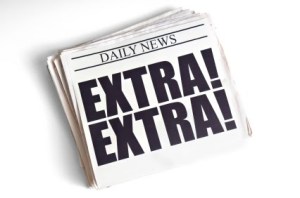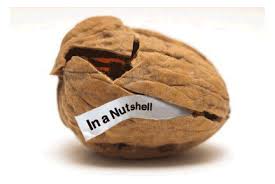 Diving into a piece of writing is so exciting; analyzing and realizing what the author could mean by a certain word, phrase or line is satisfying. As long as you have the evidence to support your claim, you cannot be wrong. However, you can be well-versed at analysis and yet, completely unaware how to write for a newspaper or Internet news. Feature writing in journalism is a whole other ball game. Learning different writing styles can come in handy to make yourself marketable in the job world.
Diving into a piece of writing is so exciting; analyzing and realizing what the author could mean by a certain word, phrase or line is satisfying. As long as you have the evidence to support your claim, you cannot be wrong. However, you can be well-versed at analysis and yet, completely unaware how to write for a newspaper or Internet news. Feature writing in journalism is a whole other ball game. Learning different writing styles can come in handy to make yourself marketable in the job world.
To show the various parts of a features story I will use a piece I wrote as a features intern for the Vineland Daily Journal in Vineland, New Jersey. The terms to describe the parts of the writing are put in [brackets].
[Title] Artist sees the light
[Subhead] Millville painter innovates to make canvas come alive
Features writing allow you to be more creative than straight news. Try to think of a title that will grab people’s attention. Keep it short and sweet. The subhead allows you to explain more about the story. When you read “artist sees the light” you know the story will be about an artist who has achieved something. The subhead explains that he uses an unusual method on a canvas.
[LEAD] MILLVILLE — Dennis Tawes is trying something new on Millville’s art scene
The well-known “pioneer artist” who helped Millville launch the Glasstown Arts District has been hinting about his latest project for months, and finally will unveil his proud work at the city’s Third Friday festivities this week.
In his small art studio at The Village on High, Tawes has been working on a new technique that he hopes will change the way people view his paintings
The lead tells who, what, when, and where the article is talking about. An ideal first line is short, and should be slightly vague so it hooks the reader and encourages the reader to keep reading. It introduces the topic, without giving away the whole story.
[NUT GRAPH] By using LED lights on a canvas to manipulate color, flower petals change hues, a Ferris wheel moves and a woman’s mask disappears from a painting. The use of bright colors is key in Tawes’ work, which is ironic because the artist says he has difficulty perceiving bright hues.
 The nut graph is a sentence or paragraph that states the focus or the main point of the story. It should tell in a nutshell what the story is about and why it is newsworthy. This nut graph explains the technique used by the artist, and an interesting tidbit that the artist himself may not be able to accurately see the hues he is creating. This topic is newsworthy because it is an unfamiliar art technique, and because of the limitations of the artist.
The nut graph is a sentence or paragraph that states the focus or the main point of the story. It should tell in a nutshell what the story is about and why it is newsworthy. This nut graph explains the technique used by the artist, and an interesting tidbit that the artist himself may not be able to accurately see the hues he is creating. This topic is newsworthy because it is an unfamiliar art technique, and because of the limitations of the artist.
LEDism, as he calls his latest obsession, started about a year ago.
[LEAD QUOTE] “My son hung up some of my paintings in his room where he happened to have an LED light,” Tawes said. “We noticed some of the colors were transforming. Artists focus light upon the subject (of) the canvas, (so we thought) what about focusing outside light onto the canvas, and it evolved from there. I started experimenting.”
The first quote that backs up the lead is called the lead quote. It is usually the strongest quote in the story and it supports the concept in the lead without repeating the same wording. This quote explains the origins of LEDism. Make sure to attribute quotes to proper sources. Ideally, a news/features story should have at least one quote from three different people (at least three quotes in total, depending on length). Since this story is about one person, quotes from just the artist are acceptable. To expand, I could have included quotes from his wife, son, or peers. My editor did not want that, so we just included the artist.
[IMPACT] Through his experimentation, Tawes realized pure color responds to LED lights.
“It’s a whole new different idea, even with painting, because I cannot think in terms of painting how I normally paint,” he said. “I have to think of how the light is going to affect the painting itself.”
Setting out to change how people view paintings, Tawes said this method “enhances” what the viewer sees and “reinvents” the painting.
“In my artistic career over the past 30 years I have endeavored to achieve something new with my art, something that had not been seen before,” he said.
He was hoping to combine modern technology and capture the movement of everyday life. To this point, he has only shown a handful of people his latest paintings; Tawes said he has received positive reactions.

The impact shows the readers why they should care. This method could “change how people view paintings” according to Tawes. Therefore, it is significant to the art world, but also to the common reader who views art.
[Elaboration Quote] “I haven’t changed my painting style, so it’s expressionist. (I) dabble a little in abstract, but with LED lights, when I first started thinking about it, it’s like a new level in modern art,” Tawes said. “It makes you question more of what you’re looking at. At one point it’s red, now it’s black or turns purple. How did it do that?”
Quotes can stand alone as added information for the story. Instead of me as the writer explaining the methodology, it’s more impactful when the subject explains in his own words. This elaboration is simply added information for the reader.
[Ending] Tawes can’t imagine a different life for himself.
“You raise the so-called bar to a different level where it’s just a natural growth. I don’t want to be cookie-cutter or paint what I think the market wants. That’s not why I paint,” he said. “It’s just waking up and doing what I do.”
Depending on the subject, the ending will vary. This ending is a wrap-up quote. It explains that Tawes will continue to work on his LEDism. You don’t want to repeat information given previously in the ending. Concluding with a quote is a popular way to end features stories.

Find Your Voice!
Just like an essay, there is a structure to features writing. Following the format above is useful to create a features story. Be sure to add some creativity to the piece, so you can have a “voice” in your features story! If you need help with any kind of writing, please contact us! 🙂
Happy Writing!
By Ally Evans
